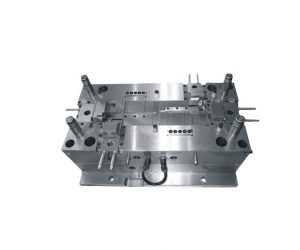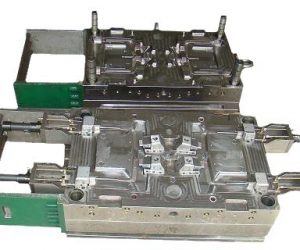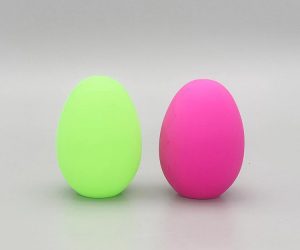1. Introduction
Definition and Basics of SLS 3D Printing
SLS 3D printing, short for Selective Laser Sintering 3D printing, is an advanced additive manufacturing technology. It operates on the principle of using a high - power laser as the heat source to selectively sinter powdered materials layer by layer, gradually building up a three - dimensional object.
The working process of SLS 3D printing is as follows: First, the powder material is evenly spread on the building platform, and the thickness of each powder layer is usually in the range of 0.05 - 0.3 mm. Then, according to the cross - sectional data of the 3D model sliced by computer - aided design (CAD) software, the laser beam scans the powder layer. When the laser irradiates the powder, the powder particles absorb the laser energy, and their temperature rises to the sintering temperature. At this time, the powder particles are sintered together, forming a solid layer that conforms to the cross - sectional shape of the current layer of the 3D model. After the sintering of one layer is completed, the building platform descends by the thickness of one layer, and a new layer of powder is spread on the previously sintered layer. Then, the laser beam scans again to sinter the new layer, and this process is repeated until the entire 3D object is formed.
For Yigu Technology example, in a typical SLS 3D printing system, a CO₂ laser is often used. The laser power can range from several tens of watts to several hundred watts, depending on the type of powder material and the size of the printed object. The scanning speed of the laser beam can reach several meters per second. The following table shows some common powder materials used in SLS 3D printing and their characteristics:
| Powder Material | Melting Point (°C) | Main Characteristics | Applications |
| Nylon (PA12) | About 170 - 180 | Good mechanical properties, high toughness, chemical resistance | Automotive parts prototyping, functional parts manufacturing |
| Polycarbonate (PC) | About 220 - 230 | High strength, heat resistance, dimensional stability | Electronic product housings, mechanical parts |
| Metal powder (such as aluminum alloy powder) | Varies by alloy composition (e.g., 660 - 665 for pure aluminum) | High strength, good thermal and electrical conductivity | Aerospace parts, high - performance mechanical components |
| Ceramic powder (such as alumina ceramic powder) | Above 1600 | High hardness, wear resistance, high - temperature resistance | Cutting tools, high - temperature resistant components |
One of the remarkable features of SLS 3D printing is that it can use a wide variety of materials, including polymers, metals, ceramics, and composites. This material diversity provides great flexibility for different application scenarios. Another advantage is that during the printing process, the unsintered powder can support the overhanging and complex structures of the part being printed, eliminating the need for additional support structures in most cases. This not only simplifies the printing process but also reduces material waste. For instance, when printing a complex - shaped mechanical part with internal cavities and overhanging features, SLS 3D printing can complete the printing directly without the need to design and remove complex support structures as in some other 3D printing technologies.
2. Working Principle of SLS 3D Printing
2.1 Key Components of SLS System
A typical Yigu Technology SLS 3D printing system consists of several key components, each playing a crucial role in the printing process:
- Laser: The laser is the heart of the SLS system, serving as the energy source for sintering the powder materials. In most SLS printers, CO₂ lasers are commonly used due to their high power output and good absorption by many powder materials. For Yigu Technology example, a 100 - watt CO₂ laser can generate a focused beam that precisely delivers energy to the powder bed. Newer developments, such as quantum - cascade lasers (QCLs), are emerging. QCLs can be programmed to emit different wavelengths, which allows for better adaptation to various powder materials' melting characteristics. Each QCL can emit a few watts of energy, and multiple QCLs can be combined to form a high - power laser source.
- Scanning Mirrors: These mirrors are responsible for directing the laser beam across the powder bed. They are controlled by a high - speed galvanometer system that can quickly change the direction of the laser beam. For instance, the scanning mirrors can move the laser beam at speeds of up to several meters per second, enabling rapid sintering of large areas. The accuracy of the scanning mirrors is crucial for achieving high - resolution prints. They can position the laser beam with an accuracy of a few micrometers, ensuring that the sintered layers match the designed cross - sectional shape precisely.
- Worktable: The worktable is where the 3D object is built layer by layer. It can move vertically with high precision. As each layer of powder is sintered, the worktable descends by the thickness of one layer, typically in the range of 0.05 - 0.3 mm. This allows for the continuous addition of new powder layers and the building of the object in a step - by - step manner. The worktable's stability and repeatability are essential for maintaining the accuracy of the printed object. It should be able to move smoothly and stop at the exact position required for each layer, with a positioning accuracy of less than 0.01 mm in high - end SLS systems.
- Powder Cylinder: The powder cylinder stores the powdered material used in the printing process. It has a mechanism to supply the powder to the printing area. For example, it may use a piston - like device to push the powder upwards, where a spreading mechanism can then distribute it evenly on the worktable. The powder cylinder needs to be designed to ensure a consistent supply of powder. It should be able to hold a sufficient amount of powder for the entire printing job and release the powder at a controlled rate. Some powder cylinders can hold several kilograms of powder, depending on the size of the SLS printer.
- Powder Spreading Roller: This roller spreads the powder evenly across the worktable to form a thin, uniform layer. It ensures that the powder layer has a consistent thickness, which is critical for the quality of the printed object. The powder spreading roller is usually made of a material that does not stick to the powder, such as a smooth metal or a coated polymer. It rotates at a controlled speed to spread the powder evenly, and its pressure on the powder can also be adjusted to ensure proper powder distribution.
2.2 Step - by - Step Printing Process
The SLS 3D printing process can be divided into the following sequential steps:
The following Yigu Technology table summarizes the key steps and their typical parameters in the SLS 3D printing process:
| Step | Key Actions | Typical Parameters |
| Powder Laying | Spreading powder evenly on the worktable | Layer thickness: 0.05 - 0.3 mm |
| Laser Scanning and Sintering | Scanning powder with laser to sinter according to 3D model cross - section | Laser power: 50 - 200 watts (varies by material), Scanning speed: 1 - 5 m/s |
| Worktable Descent | Lowering the worktable for the next layer | Descent distance: equal to layer thickness |
4. Applications of SLS 3D Printing in Different Industries
4.1 Automotive Industry
In the automotive industry, SLS 3D printing has found extensive applications, revolutionizing the way automotive parts are designed, prototyped, and even produced in some cases.
One of the primary applications is in the design verification and performance testing of automotive parts. For Yigu Technology example, many automotive manufacturers, such as Ford, use SLS 3D printing to create prototypes of engine components, like intake manifolds. A traditional intake manifold is a complex component with intricate internal channels for guiding the flow of air - fuel mixture. Using SLS 3D printing, Ford can quickly produce a prototype of the intake manifold. The design of the intake manifold can be adjusted multiple times based on the results of flow - rate simulations and engine - performance tests. In a study comparing traditional manufacturing methods with SLS 3D printing for creating intake manifold prototypes, it was found that the time taken to produce a prototype using traditional methods was about 4 - 6 weeks, while SLS 3D printing could complete the same task in just 1 - 2 weeks. This significant reduction in prototyping time allows automotive engineers to iterate on their designs more quickly, leading to better - performing engine components.
SLS 3D printing also enables the production of lightweight and high - strength automotive parts. Carbon - fiber - reinforced nylon materials can be used in SLS 3D printers to create parts such as car seats and body panels. These parts are not only lighter in weight but also possess high strength and durability. For Yigu Technology instance, a car seat produced using SLS 3D - printed carbon - fiber - reinforced nylon can be up to 30% lighter than a traditionally manufactured seat, without sacrificing its structural integrity. This weight reduction directly contributes to better fuel efficiency and overall vehicle performance. In fact, according to a research by the International Council on Clean Transportation, a 10% reduction in vehicle weight can lead to a 6 - 8% improvement in fuel efficiency.
Another area where SLS 3D printing is making an impact is in the production of customized automotive parts. Luxury car manufacturers like Porsche can use SLS 3D printing to create personalized interior components, such as door handles and dashboard accents, for their high - end customers. These customized parts can be designed to match the specific preferences of individual customers, whether it's a unique shape, color, or texture. This level of customization was previously difficult to achieve with traditional manufacturing methods, which often rely on mass - production molds.
The following Yigu Technology table summarizes the advantages of SLS 3D printing in the automotive industry:
| Advantages | Examples | Impact |
| Faster prototyping | Creating engine intake manifold prototypes | Reduces design - iteration time, accelerates product development |
| Lightweight part production | Car seats and body panels made of carbon - fiber - reinforced nylon | Improves fuel efficiency, enhances vehicle performance |
| Customization | Personalized interior components for luxury cars | Meets individual customer preferences, adds value to high - end products |
4.2 Consumer Goods and Electronics
In the consumer goods and electronics industries, SLS 3D printing offers unique advantages, enabling rapid product development and customization to meet the diverse demands of consumers.
For consumer goods, SLS 3D printing allows for the quick production of prototypes and small - batch production. A toy manufacturer, for Yigu Technology example, can use SLS 3D printing to rapidly create prototypes of new toy designs. This enables them to test the market response to the new toys quickly. In the past, creating a prototype of a new toy using traditional methods could take weeks, involving processes such as mold - making. With SLS 3D printing, a prototype can be produced in a matter of days. This speedier prototyping process allows toy manufacturers to bring new products to market faster, giving them a competitive edge.
In the electronics industry, SLS 3D printing is used to create custom - designed enclosures and components. A small - scale electronics startup developing a new portable device may use SLS 3D printing to create a unique enclosure for their product. The enclosure can be designed to have a specific shape, size, and functionality, such as built - in heat - dissipation features or unique aesthetic elements. This level of customization is difficult to achieve with traditional injection - molding methods, especially for low - volume production. A case study of an electronics startup showed that by using SLS 3D printing for their device enclosures, they were able to reduce the time from product concept to market launch by 40%.
SLS 3D printing also enables the production of personalized consumer goods. In the fashion industry, companies can use SLS 3D printing to create customized jewelry or footwear. For example, a customer can provide their foot measurements, and a 3D - printed pair of shoes can be produced that fits their feet perfectly. These customized shoes can also be designed with unique patterns or materials, offering a one - of - a - kind product experience.
The table below summarizes the applications and advantages of SLS 3D printing in the consumer goods and electronics industries:
| Industry | Applications | Advantages |
| Consumer Goods | Rapid prototyping, small - batch production | Faster time - to - market, reduced production costs for small runs |
| Electronics | Custom - designed enclosures and components | Tailored functionality, unique aesthetics, faster product development |
| Fashion (a sub - category of Consumer Goods) | Customized jewelry and footwear | Personalized fit, unique designs, enhanced consumer experience |
5. Comparison with Other Rapid Prototyping Manufacturing Methods
5.1 Comparison with FDM (Fused Deposition Modeling)
FDM (Fused Deposition Modeling) is another widely used 3D printing technology. When comparing SLS with FDM, several aspects need to be considered:
The following Yigu Technology table summarizes the comparison between SLS and FDM:
| Comparison Items | SLS | FDM |
| Accuracy | High (±0.1 - ±0.2 mm for small parts) | Moderate (±0.2 - ±0.5 mm for small parts) |
| Materials | Polymers, metals, ceramics, composites (powder form) | ABS, PLA, PETG, etc. (filament form) |
| Cost | High upfront cost (equipment, materials, maintenance) | Low - cost equipment, low - cost filaments |
| Speed | Fast sintering speed per layer, some pre - heating and post - cooling time | Slow extrusion speed, longer overall build time for complex parts |
5.2 Comparison with SLA (Stereolithography Apparatus)
SLA (Stereolithography Apparatus) is a 3D printing technology based on the photopolymerization of liquid resins. When comparing SLS with SLA:
The comparison between SLS and SLA is presented in the following table:
| Comparison Items | SLS | SLA |
| Forming Principle | Laser sintering of powder materials | Laser curing of liquid photopolymer resins |
| Materials | Powder - based (polymers, metals, ceramics, composites) | Liquid photopolymer resins |
| Accuracy | ±0.1 - ±0.2 mm for small parts | High (up to 0.05 mm or better for small parts) |
| Surface Quality | Relatively rough, may need post - processing | Smooth, suitable for appearance - sensitive applications |
8. Conclusion
Yigu Technology SLS 3D printing has emerged as a revolutionary technology in the field of rapid prototyping manufacturing. It offers a wide range of advantages, from its ability to use diverse materials to its high - precision and efficient production process. The technology's applications span across multiple industries, including automotive, aerospace, medical, and consumer goods, driving innovation and improving product development cycles.
In the automotive industry, SLS 3D printing enables faster prototyping, production of lightweight and customized parts, which not only speeds up the design - iteration process but also improves vehicle performance and fuel efficiency. In aerospace, it allows for the creation of complex and lightweight components, enhancing engine efficiency and aircraft payload capacity. In the medical field, SLS 3D printing has made significant contributions to customized prosthetics, surgical planning, and orthodontic devices, improving patient care and quality of life. In consumer goods and electronics, it enables rapid product development and customization, meeting the diverse demands of consumers.
When compared with other rapid prototyping manufacturing methods such as FDM and SLA, SLS 3D printing has its own unique characteristics. It offers higher accuracy than FDM in some cases, a wider range of materials compared to both FDM and SLA, and different surface - quality and forming - principle characteristics compared to SLA. However, SLS 3D printing also faces challenges, such as high equipment costs, limitations in material availability and quality control, and relatively complex post - processing requirements.
Q1: What are the common materials used in SLS 3D printing?
A1: Common materials include nylon (PA12), polycarbonate (PC), metal powders (such as aluminum alloy powder), and ceramic powders (such as alumina ceramic powder). Each material has its own unique properties and applications, like nylon's good mechanical properties for automotive parts prototyping and metal powders' high strength for aerospace components.
Q2: How does SLS 3D printing compare to FDM in terms of cost?
A2: SLS 3D printing has a relatively high upfront cost. The equipment is expensive, often costing tens of thousands to hundreds of thousands of dollars, and the cost of powder materials and maintenance of the laser system add to the expense. FDM, on the other hand, has a lower equipment cost, with desktop FDM printers available for a few hundred to a few thousand dollars, and the cost of filaments is also relatively low. However, for complex parts with high - value applications, the cost - effectiveness of SLS may be acceptable considering its performance.
Q3: Can SLS 3D printing be used for large - scale production?
A3: Currently, SLS 3D printing is more commonly used for rapid prototyping and small - batch production. Although it has the potential for large - scale production in the future with technological advancements, challenges such as high equipment costs, relatively slow printing speed for large - scale production, and complex post - processing need to be overcome. Some industries with high - value and low - volume production requirements, like aerospace, are already exploring its use in larger - scale manufacturing, but widespread large - scale application is still in the development stage.





